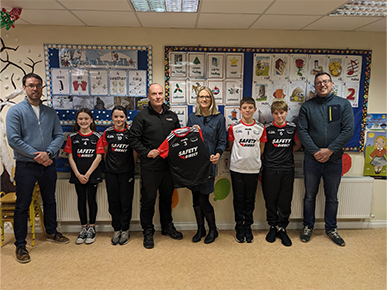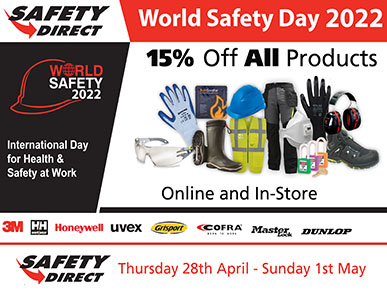Safety Footwear: Simplifying Standards and Ratings

Safety footwear is an important component of personal protective equipment (PPE) designed to protect users in a range of hazardous environments. From anti-static to cut-resistant features, safety footwear offers a wide range of options with a variety of safety ratings. These standardised ratings ensure consumers can confidently purchase safe, reliable, and quality footwear, and understanding the ratings system ensures you make informed decisions about your protection needs.
The Role of ISO Standards
The International Organization for Standardization (ISO) sets the international standards for personal protective equipment (PPE), ensuring that products meet safety and quality requirements. It is an international accreditation for quality assurance, and all safety footwear must conform to EN ISO 20345:2021 which outlines footwear-specific protection criteria. The ISO format can be broken down as follows:
- EN: European Norm (applicable across Europe)
- ISO: International Organization for Standardization (applicable internationally)
- 20345: Classification of subject (PPE - Safety Footwear)
- 2021: The year the standard was last updated
Defining Key Safety Footwear Codes
All safety footwear, from trainers to boots, use the same ratings. Footwear codes denote specific safety or technical features. These codes combine to form ratings, so understanding how they break down ensures that you choose the right protection for your needs.
- A: Antistatic
- CR: Cut-resistant upper
- E: Energy absorption of heel region
- FO: Fuel-resistant outsole
- P: Penetration resistance
- SR: Slip resistance
- WR: Waterproof
- WRU: Water penetration and absorption resistance
Understanding Safety Footwear Ratings


All safety footwear combines a base SB rating with additional features. For example, the S1 rating includes:
- SB: Toe protection (up to 200J), a fuel-resistant outsole and basic slip resistance
- A: Antistatic properties
- E: Energy absorption of the heel region
Footwear with an S1 rating are therefore suitable for industries in dry environments where there is no risk of sharp objects. Opt for footwear with a higher rating, such as S2 or S3, if added features like water resistance or puncture resistance are necessary.
New Updates to Slip Resistance
In conditions that are wet or oily, slip resistance is a crucial feature for safety footwear. In 2022, the ISO standard for safety footwear was updated, resulting in significant changes to slip resistance ratings. The previous SRA, SRB and SRC ratings, which defined three levels of slip resistance, were retired. All safety footwear must now meet a minimum slip resistance level, comparable to the SRA rating, to be certified as safety footwear. Manufacturers can extend the protection with a new SR rating that is similar to the previous SRC rating.
Previous Slip Resistance Ratings:
- SRA: slip resistance on ceramic tile floors with sodium lauryl sulphate (SLS)
- SRB: slip resistance on steel floors with glycerol
- SRC: SRA + SRB
New Slip Resistance Rating:
- No letter/symbol: minimum slip resistance level for all safety footwear
- SR: slip resistance on ceramic tile floors with glycerine
Selecting the correct safety footwear depends on your workplace hazards. Whether you're working in construction, manufacturing, or food processing, understanding the codes and ratings will help you choose the footwear that meets your specific needs. Safety Direct offers a wide range of safety footwear that you can browse online or in-store to find the best-suited options for your environment.












